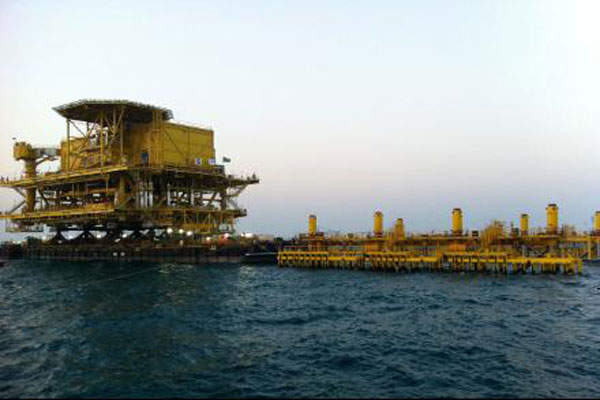
The Largest Oil Fields in the World: Gulf of UAE
Safaniya – largest offshore oilfield in the world
Safaniya field in the Persian Gulf, Saudi Arabia, is the world’s largest offshore field. It is owned and operated by Saudi Aramco, the national oil and natural gas company of Saudi Arabia. The field is believed to contain an estimated total reserve of more than 50 billion barrels. The recoverable oil reserves at the field are reportedly estimated to be up to 36 billion barrels.
Safaniya was discovered in 1951 and has been in production since 1957. It is operated with more than 624 production wells and a series of different platforms. Daily production capacity of the heavy crude oil producing field is up to 1.5 million barrels.
Saudi Aramco is currently implementing a Master Development Plan to sustain the production capability of the ageing field. The development plan includes expansion and upgrade of the field’s crude-gathering and transport capacity, and the installation of electric submersible pumps (ESPs) for artificial lifting of crude.
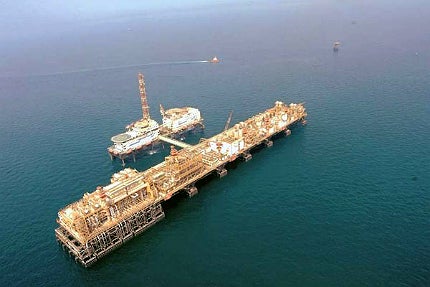
Upper Zakum
Upper Zakum oilfield, located 84km north-west of Abu Dhabi Islands, United Arab Emirates (UAE), in the Persian Gulf, is the second largest offshore oilfield in the world. The offshore oilfield reportedly contains around 50 billion barrels of oil in total with an estimated recoverable oil reserve of up to 21 billion barrels.
The Upper Zakum field was discovered in 1963 and brought on stream in 1967. It is owned and operated by Zakum Development Company (ZADCO), which is a joint venture of Abu Dhabi National Oil Company (ADNOC-60%), ExxonMobil (28%) and Japan Oil Development Company (JODCO-12%).
The current production capacity of the field is 500,000 barrels of crude a day. The crude oil from Upper Zakum is sent for further processing, storage and export to the Zirku Island located 140km north-west of Abu Dhabi.
The oil field is currently undergoing an upgrade worth more than $10bn to increase its daily production to 750,000 barrels by 2015 and sustain the same for 25 years.
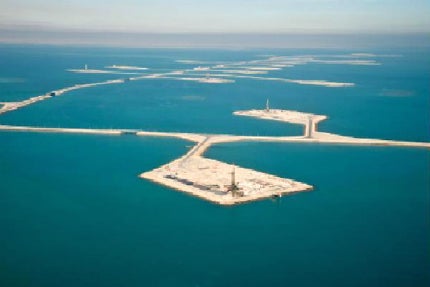
Manifa
Manifa oilfield, located south-east of the Safaniya field in the shallow waters of Persian Gulf, Saudi Arabia, is reported to contain an estimated recoverable oil reserve of up to 13 billion barrels. It is a heavy crude oil producing offshore field owned and operated by Saudi Aramco.
Manifa field was discovered in 1957. It started production in 1964 with a daily capacity of 200,000 barrels. It was brought offline in 1984 due to reduced demand for its heavy crude. Saudi Aramco made an investment decision in 2007 to restart production from Manifa, with increased capacity as the oil price exceeded $70 per barrel.
The front-end engineering and design (FEED) for the Manifa crude oilfield development was completed by the end of 2007. The first phase of production started in April 2013. The production is expected to reach 500,000 barrels a day by the end of 2013 and 900,000 barrels a day by the end of 2014.
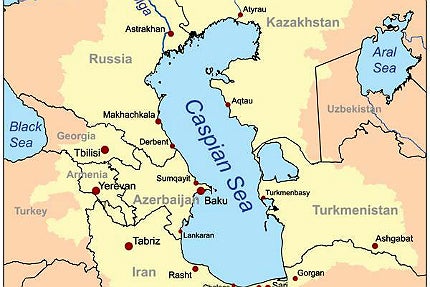
Kashagan
Kashagan oilfield is located 80km south-east of Atyrau in the North Caspian Sea, Kazakhstan, and is the largest offshore field outside the Middle East. The field contains more than 35 billion barrels of oil in total and an estimated recoverable oil reserve of nine billion barrels. It was discovered in 2000 and commercial development was announced in 2002.
The field is being developed in phases by the North Caspian Sea Production Sharing Agreement (NCSPSA) consortium comprised of KMG (KazMunayGas-16.81%), Eni (16.81%), ExxonMobil (16.81%), Shell (16.81%), Total (16.81%), ConocoPhillips (8.40%) and INPEX (7.56%).
The total cost of the offshore project is more than $100bn. First oil production from Kashagan is expected in 2013 with an initial output of 180,000 barrels per day. The production is expected to peak at 1.5 million barrels a day by 2021.
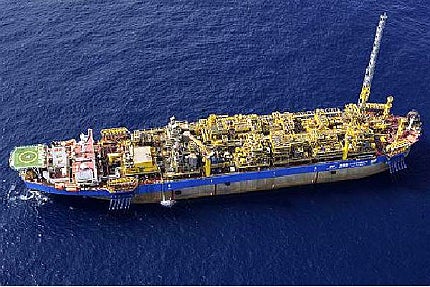
Lula (Tupi)
The Lula field, earlier known as the Tupi field, is a major pre-salt oil discovery in the Santos Basin, Brazil. It was discovered by a consortium led by Petrobras in 2007. The estimated recoverable oil reserve in the Lula field as of 2010 stood at 6.5 billion barrels.
Petrobras operates the Lula field with a 65% stake. BG Group and Galp Energia hold 25% and ten percent stakes respectively. Production from the first phase of pilot production project in the Lula field began in 2010. Production from the north-east area of Lula field started in 2011.
The second phase of the pilot production project is currently underway and will extend beyond 2017. The total development cost of the field is expected to exceed $100bn.
Related content
Platforms vs artificial islands – which works best for who?
Zakum Development Company (ZADCO) is ramping up production at its oilfield offshoreof Abu Dhabi, opting to use a network of artificial islands instead of a traditional steel rig.
The cold war: how sea ice impacts on Arctic operations
Ice floes forced Shell to stop drilling operations in the Arctic and the threat is set to escalate as summer sea ice disappears at an accelerated rate.


.gif)

